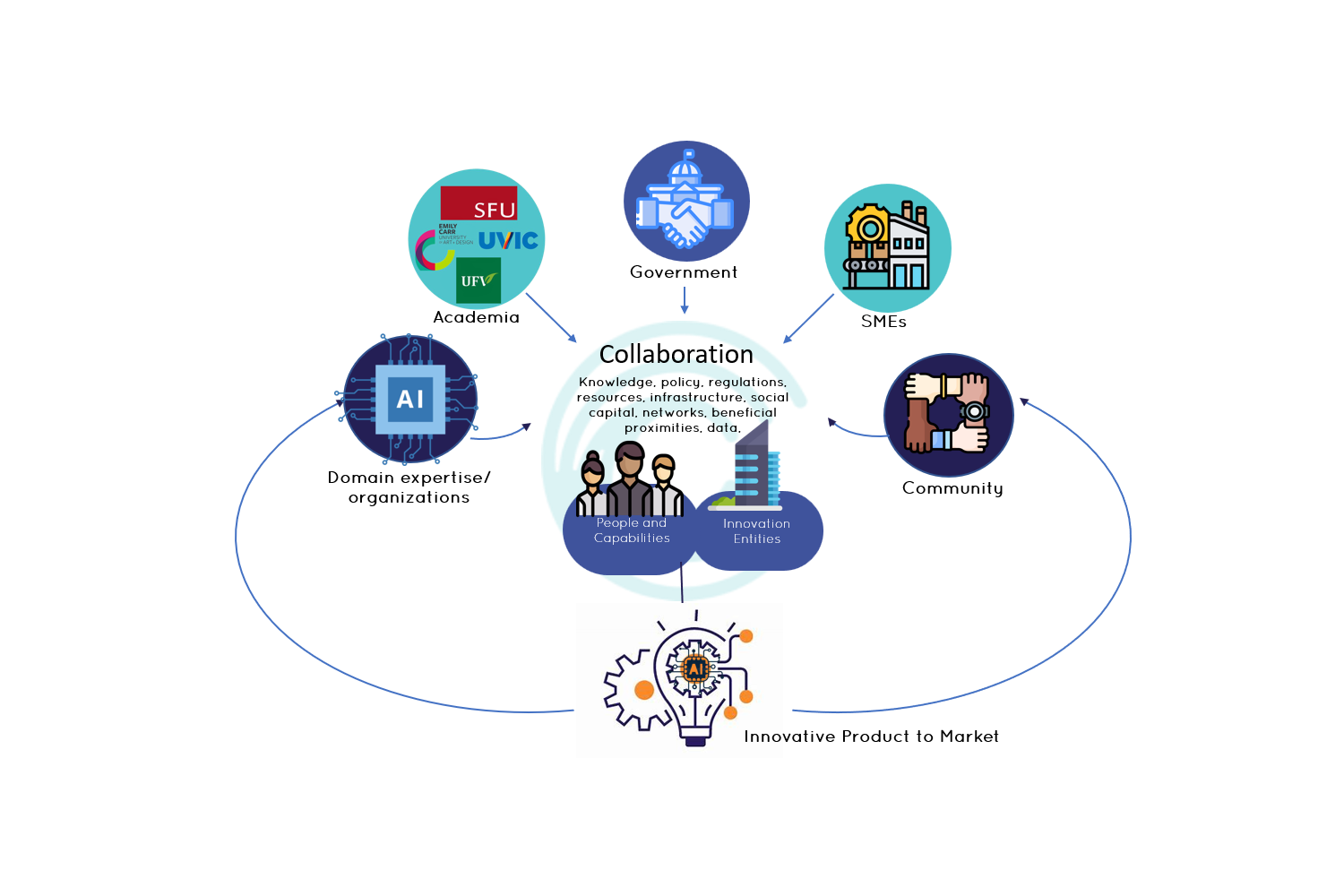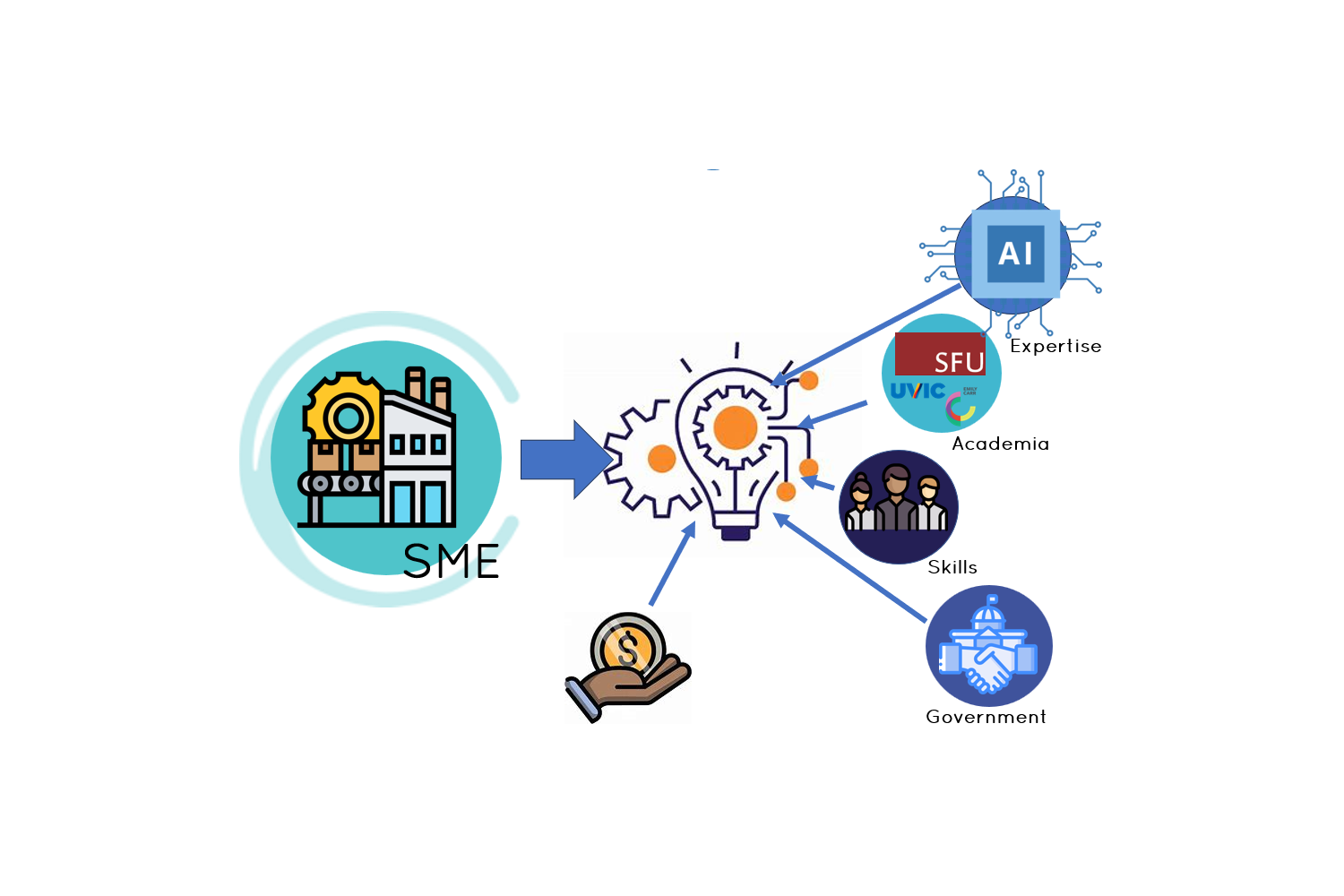SWAT Methodology
Circle Innovation’s proven bottom-up approach for bridging innovation-to-impact – SME Workforce And Technologies – identifies barriers to innovation, inverting the funding agency model and breaking silos, collaborating with SMEs to bring over 100 products to market.
SME Workforce And Technologies (SWAT) Model
Innovation emerges into an environment that is ill-equipped to embrace it, inevitably throwing up barriers and friction that limit impact. SWAT smooths the way – proactively identifying barriers and helping SMEs eliminate them quickly and efficiently.
SWAT focuses on the SME – their needs and their barriers. Instead of imposing solutions, SWAT adapts to the circumstances, brings SMEs into dialog, and designs a solution appropriate to the moment. Each company is at a unique point in its journey bringing products to market.
Circle Innovation’s unique SWAT Model facilitates co-development of technologies by breaking silos and connecting industry partners with the curated participation of public sector, academia, market leaders, service providers and end-users.
SWAT operates at the speed of business, meeting SMEs where they live, and brings critical resources to bear in an agile, responsive co-management process. The focus is the technology SME and the delivery of products to the market.
In addition, SWAT facilitates access to resources, knowledge, and technology to engage students, professors, and faculty to develop relationships with industry and support generation of innovative solutions. Together, the ecosystem works more effectively developing new technologies and driving economic benefits, addressing skill gaps in technology workers across our region and bringing existing expertise into contact with technology business.
What Our Partners Say
Ecosystem Collaboration
Breaking silos
Within every market, there are a key ecosystem partners who can ensure the success of innovation. Access to them has often been a barrier for SMEs. SWAT ensures they can reach the right resources quickly without adding undue burden or generating delays.
Co-Designed Projects
Identifying barriers
Through ecosystem support, Circle works closely with the SME to identify critical barriers to their commercial success and design the right project. Resources, expertise, and skills are brought to the table, agreed upon, and then co-funded. All projects are selected on the basis of bringing products to market and having significant impact.
Upskilling and Training of HQP
Delivering resources
Circle Innovation focuses on experiential training, as well as development of critical skills, to both upskill existing workers and to bring new talent rapidly into industry. Students work with the Circle team while participating in industry projects, learning the ins and outs of product innovation without burdening or impacting the business.
Steps of the SWAT Model
Technology SMEs facing challenges are rapidly qualified, assessed, and engaged:
1
Qualifying
Initial discussion with industry to assess eligibility and learn about product development challenges.
2
Assessing Needs
Identify barriers to impact, product needs, existing resources, and resource gaps.
3
Designing Project
Develop and design industry-led product development projects to shorten time-to-market.
4
Building a Team
Assemble a stakeholder team to support the project. This includes skills and talent, domain experts in academia, government, healthcare, and community groups.
5
Resourcing, Co-Funding, and Launching
Project management ensures deliverables meet specifications, and resources available including training/upskilling, talent and key partners, and non-dilutive co-funding.
6
Managing to Deliverables
Timeline to market is shortened and commercial viability is enhanced with successful project completion and new stakeholder partnerships.





